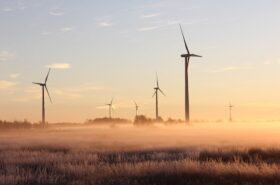Generating renewable will be very crucial in the fight to reduce or eliminate the adverse effects of climate change. Solar, wind, and hydro are three of the most common renewable energy sources. Wind and solar alone generated over 10% of the global electricity in 2021. On the other hand, hydroelectricity contributed over 17% of the global power.
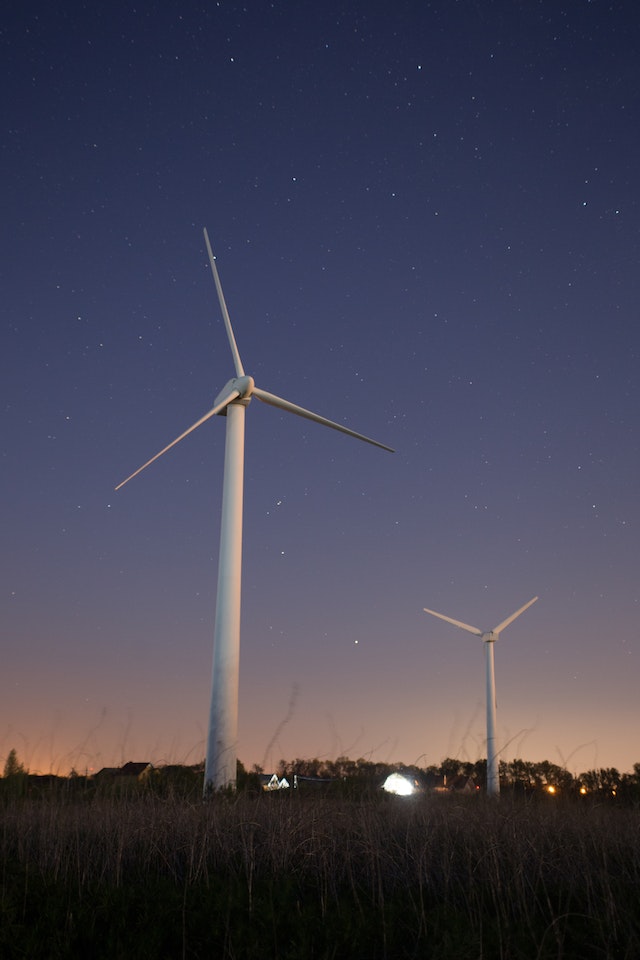
These percentages are expected to grow in the next couple of years thanks to the many ongoing projects aimed at advancing power generation from these sources. In today’s article, we will cover ten of the largest renewable energy projects you probably haven’t heard of before. Let’s jump right in!
The Top 10 Most Interesting Renewable Energy Projects
Three Gorges (China)


It is the world’s largest hydropower station built on the Yangtze River in China. The construction of this power station started back in 1993 and was completed in 2012, almost 20 years later. This hydropower plant powers a significant part of China’s economy thanks to the several terawatt hours of power it generates yearly. Here are some of the features that make this power plant unique.
- The construction of this facility cost over $29 billion, making it one of the most expensive hydropower stations in the world.
- The annual power output of this plant is estimated to be around 85 Terawatt hours generated from 32 turbine units.
- Each of the turbine units in this power plant has the capacity to generate over 700 megawatts. The facility also has 20 50MW generators.
- The hydro power plant consists of a 181-meter-tall and 2,335-meter-long gravity dam, one of the tallest in the world.
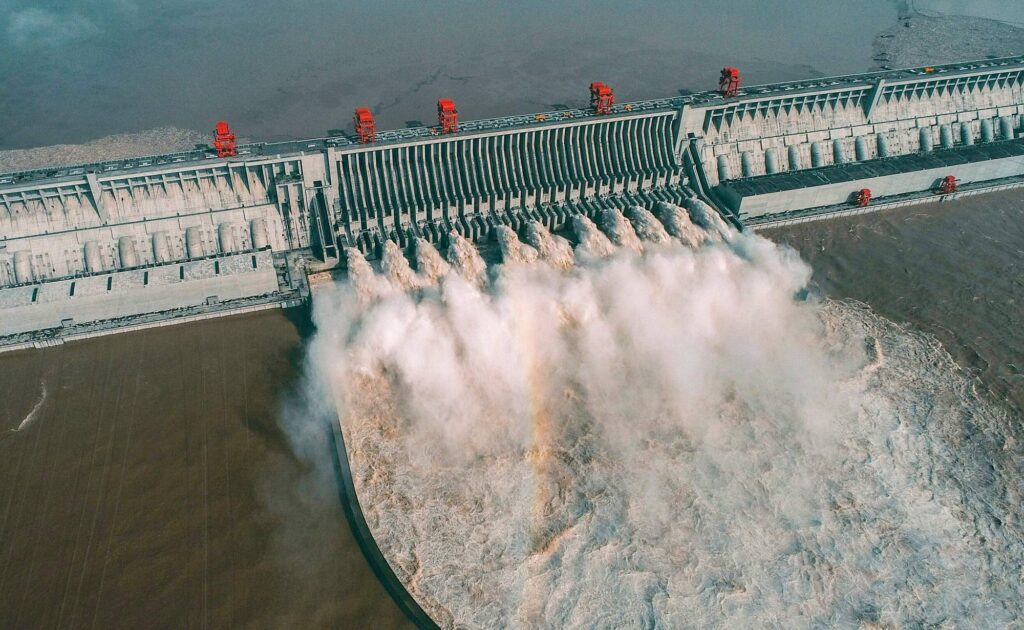

Wudongde Hydropower Station (China)
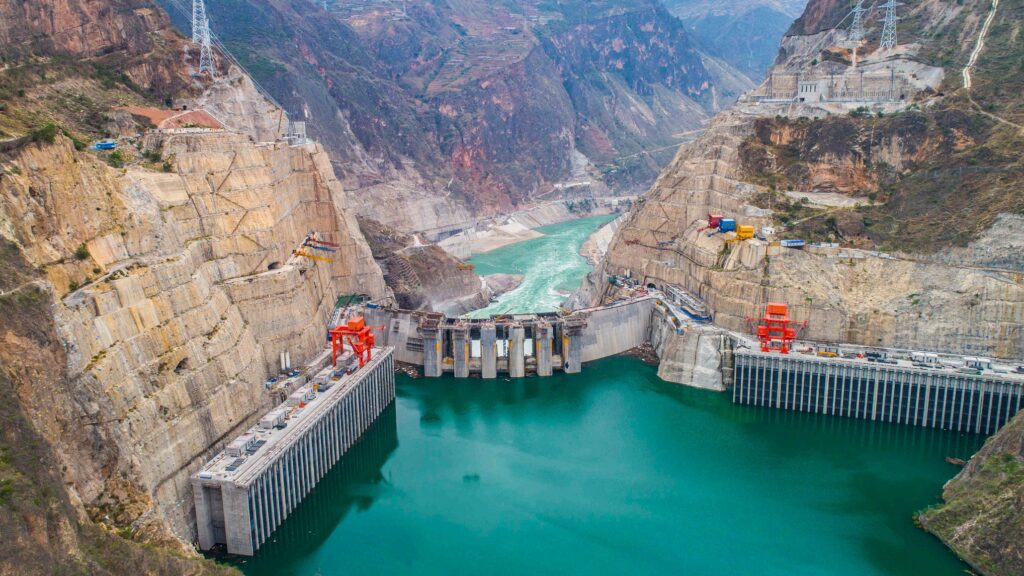

This hydropower station is one of the largest in the world and is located on the Yangtze River in China. The project to construct the dam began back in 2015 and was fully completed in 2021. However, the first round of energy from this dam was produced in June 2020. Here are some of the key features of this hydropower plant
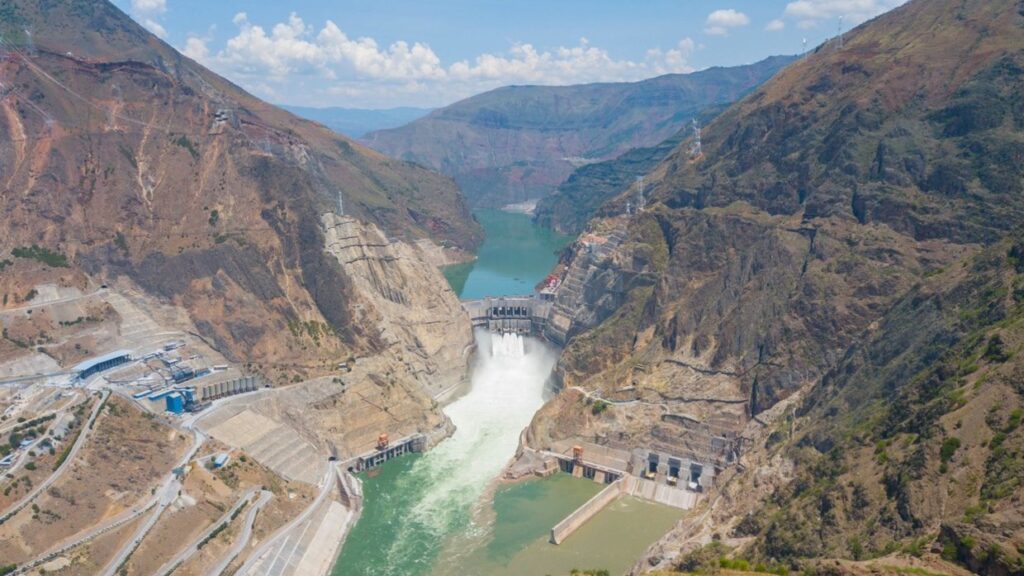

- The construction of this facility cost a total of $15.4 billion.
- It is made of low-heat cement that can withstand large temperature differences, which is a crucial move to stop the dam from cracking. This dam is also built with real-time temperature monitoring to eliminate any chances of damage that could be caused by high or low temperatures.
- The dam is also 240m tall, making it one of the tallest dams in the world. Its height is one of the reasons for the insane amount of energy extracted from this hydropower plant.
- This hydropower plant will produce up to 38.9 Terawatt hours of energy annually. Estimates show that this dam could reduce CO2 emissions by 30.5 million tons annually. So, this power plant will be crucial to reducing greenhouse emissions in China.
Gansu Wind Power farm (China)


Gansu Wind Power farm will be located in the west of China’s Gansu province on the outskirts of the Gobi Desert. It is one of the world’s largest, if not the largest, wind power farms at the moment. The first phase of the project was completed in 2010. However, the installation of more wind turbines is still ongoing. Upon completion, this power farm will have the capacity to generate enough energy to power a small country. Below are some of the crucial features that make this wind power farm a unique project.
- The entire project will cost over $17.5 billion, which comes from China’s massive renewable budget of over $360 billion.
- The estimated power that will be generated by this plant upon completion is 20GW. Earlier this year, this plant had reached a power generation capacity of over 8GW, which is almost half the estimated goal.
- The total number of turbines they plan to install at this wind power farm will be over 7000. Over 3500 of these turbines have been installed already.
Keeyask Hydropower Generating Station (Canada)


This is also one of the major hydropower projects to be constructed in the last ten years. It is located on Gull Rapids on the Nelson River in Canada. The project was started back in 2014 and completed seven years later (in 2021). Some of the crucial features of this hydropower include the following
- The construction of this hydropower plant cost over $8.7 Billion, making it one of the most expensive power projects in Canada.
- The dam has the capacity to generate over 695 megawatts of energy, which will be crucial to reducing the unclean sources of energy that are currently used in Canada. It is expected to add over 4400 gigawatt hours of energy to the grid, which is enough to power over 400,000 homes in the country.
- It is also a 7-unit powerhouse/service bay complex on the north side of Gull Rapids;
Ghana Wave Power Project (Ghana)


This is one of the largest wave energy plants in the world that is built to take advantage of the waves on the coast of Ada in Ghana. This makes Ghana one of the early adopters of wave energy. Bloomberg expects wave energy generation to get investments of up to $10.2 Trillion between now and 2040. The main goal of this project is to develop and transmit renewable ocean energy throughout Ghana and the West African coast.
Some of the crucial features of this project include the following;
- The project cost over $7.5 billion, making it the most expensive power project in Ghana.
- This power plant will generate up to 100 MW of power, which is enough to power tens of thousands of homes in Ghana and some neighboring countries without emitting greenhouse gases to the environment.
Ulanqab Wind Farm (China)
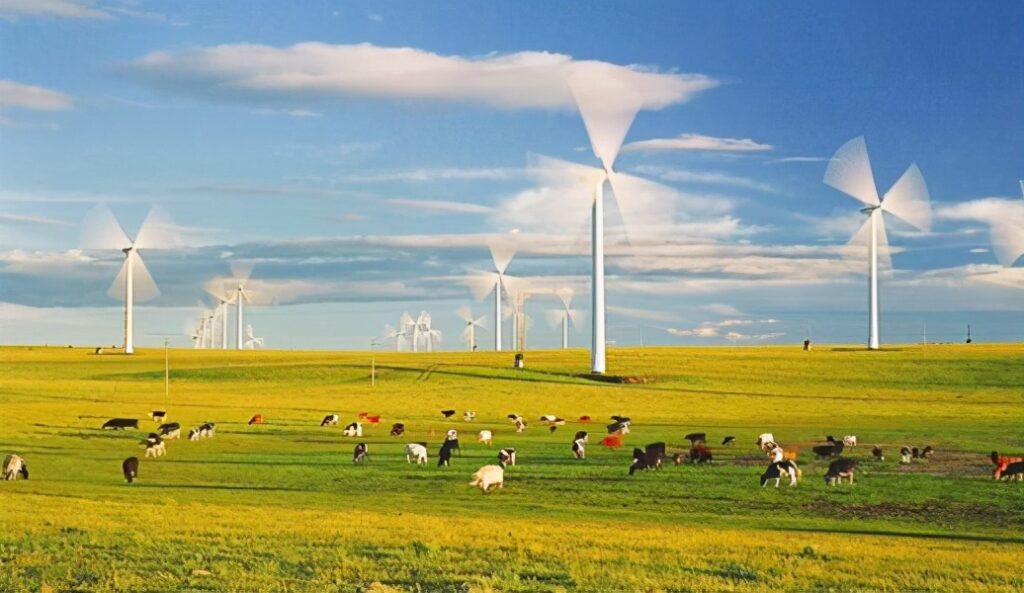

This is the largest wind power plant in the world. It is located in Inner Mongolia Autonomous Region, China. The construction of this wind farm was started in 2018 by the China State Power Investment Corporation (SPIC). One of the goals of this power plant was to provide the extra energy needed to host the 2022 Olympic games. Here are some of the crucial features of this wind power plant.
- The construction of this wind farm cost $6.2 billion, which qualifies it as one of the most expensive wind power plant projects in the world.
- It covers over 3,800 square km, making it the largest offshore wind farm in the world.
- The plant has an estimated total power generation capacity of up to 200MW. However, the first phase of the project generated half of this power. Each turbine on this wind farm has the capacity to generate up to 4.16MW of power when the wind is at its maximum speed.
Triton Knoll (UK)
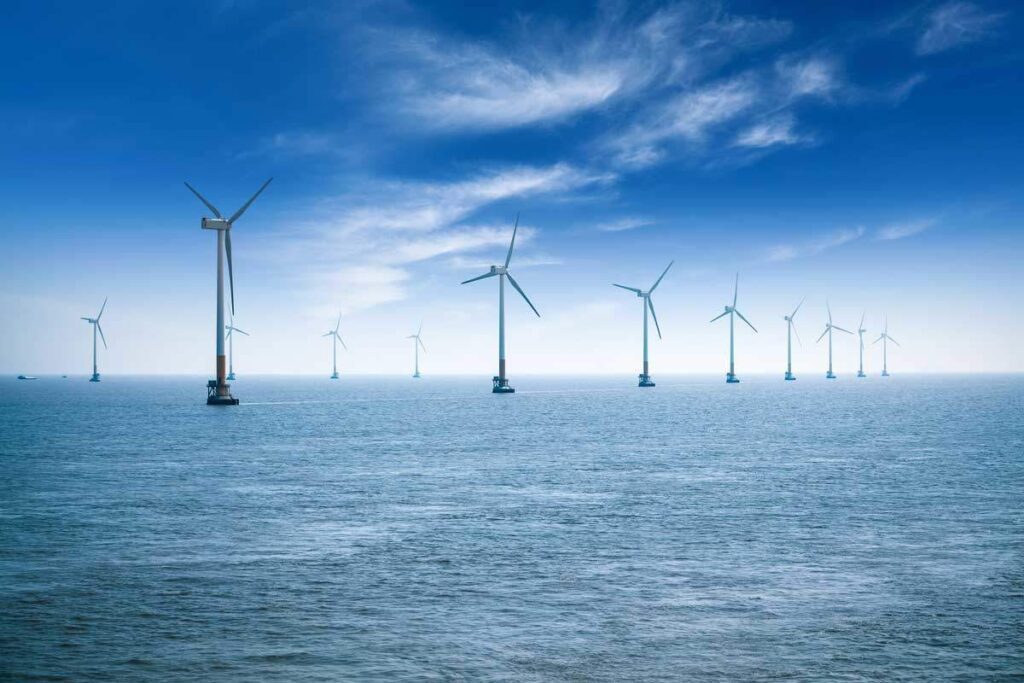

This is a wind power project in the UK and is set to be one of the largest offshore wind farms in the world. Construction of this wind power station began in 2020, and the commissioning of the first phase of the project was done earlier this year. Some of the crucial features of this wind power farm include the following;
- Its construction will cost over $6 billion, putting it among the most expensive wind power projects in the UK and the world.
- Upon completion, this wind farm will be able to generate over 860MW, which is enough to power hundreds of thousands of homes in the UK and several factories.
- It generates power from 90 V164 wind turbines, each with a rated capacity of 9.5MW. The turbine towers were constructed in water depths between 18m and 24m.
Leh and Kargil Solar Power Projects (India)


These projects consist of three phases that will generate several gigawatts of energy upon completion. The projects are still ongoing and are set to be commissioned in 2023. The solar power plants are being constructed in the Leh and Kargil districts of Jammu and Kashmir. They are aimed at improving India’s renewable energy capacity to reduce the country’s carbon footprint in the next couple of years. Some of the crucial features of these solar power plants include the following;
- The projects will cost over $6 billion, putting them among the most expensive solar projects in the world.
- Upon completion, the three phases will generate up to 7.5GW of power. 5GW will be developed in the Pang region of Leh, and the remaining 2.5GW in the Zangla region of Kargil.
Mohammed bin Rashid al-Maktoum Solar Park Phase IV (Dubai)


UAE is one of the hottest regions in the world, which is why solar contributes over 91% of their renewable energy. This project is part of the 5GW Mohammed bin Rashid al Maktoum Solar Park based in the desert of Dubai. Mohammed bin Rashid al Maktoum Solar Park will be the world’s largest solar park once completed in 2030. Phase IV of the project was commissioned earlier this year.
In this fourth phase of the project, concentrated solar panels were used for the first time, which reduces the surface area required to generate the same amount of energy when compared to the first three phases. Some of the key features of this solar power plant include the following.
- Phase IV of this gigantic solar project will cost over $4.295 billion, which is part of the $13.6 billion initially planned for the entire project.
- It is estimated to have a total capacity of over 950MW of power. This power will be generated using two kinds of solar technologies; Concentrated solar panels will generate 700MW, and the remaining 200MW will be generated using regular PV solar panels.
- This solar plant will also have the world’s tallest salt tower plant, standing 260 meters tall and receiving focused sunlight from heliostat mirrors to power steam turbines, generating 100MW of power.
Shek Kwu Chau Energy from Waste (Hong Kong)
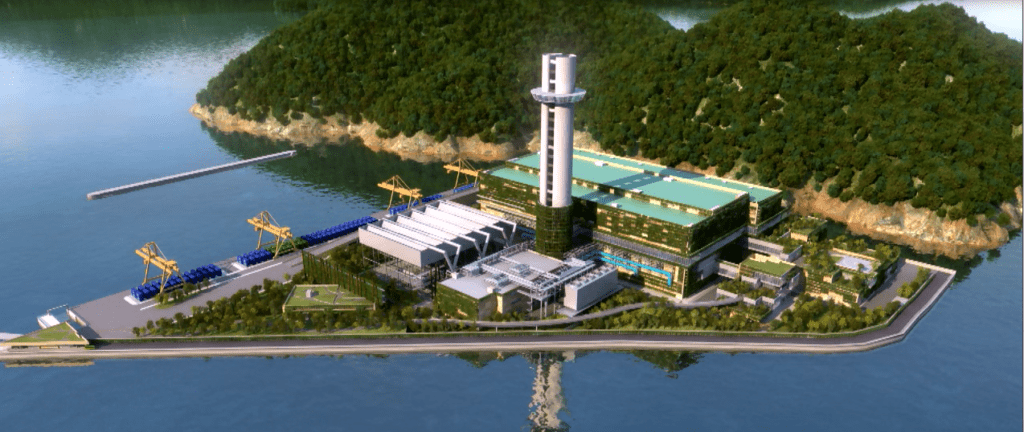

Hong Kong is one of the most densely populated cities in the world, so it is bound to have huge amounts of waste generated each year. To help solve this problem, the Environment Protection Department (EPD) has decided to construct a power generation plant to transform this waste into electricity.
So, this plant will also play a role in meeting the high-power demands in this city. This waste power plant was constructed on a reclaimed island off the coast of Shek Kwu Chau. The commissioning of this facility is expected to happen sometime in 2024. Some of the core features of this waste power plant include the following;
- The project will cost $4 billion, making it one of the most expensive waste power plants in the world.
- Upon completion, this waste power plant will be able to generate power that is enough to power over 100,000 homes in Hong Kong.
- The facility will also include a large incinerator intended to treat 3,000 tonnes of waste per day at peak operation. This will be crucial to reducing the huge amounts of garbage in this city.
Final thoughts
Those are ten of the world’s largest renewable energy projects. Most of these projects are mainly solar, wind, and hydro, except for the wave energy power plant being constructed in Ghana. You will also notice that the type of energy generation varies in the different regions. For instance, most of the largest solar plants are in UAE since it is among the hottest regions in the world.
Wave and wind energy power plants are usually located close to large water bodies due to the presence of waves and strong winds. China has some of the largest hydropower plants, thanks to the Yangtze River, which is the longest in Asia and the third longest in the world.


